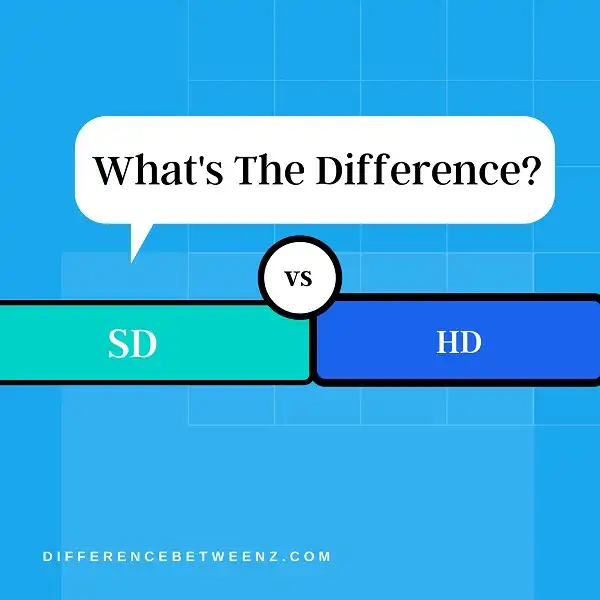There’s a big difference between SD (standard definition) and HD (high definition). But what is that difference, exactly? And which one should you choose for your home entertainment system? Here’s a look at the pros and cons of each.
What is SD?
SD, or standard definition, refers to a video format that has a resolution of 640×480 pixels. This resolution is considered to be lower than HD, or high definition, which has a resolution of 1280×720 pixels. While SD video may not have the same level of detail as HD video, it can still be considered to be of high quality. The main difference between SD and HD video is that SD video is compressed more heavily in order to save on space. This compression can sometimes result in a loss of detail, but it also makes SD video more efficient to store and transfer. For this reason, SD video is often the preferred format for videos that will be viewed on smaller screens, such as mobile phones or computers.
What is HD?
HD, or high-definition, refers to a display resolution that is significantly higher than that of standard definition. HD displays have a resolution of at least 1280×720 and can go up to 1920×1080. The term “HD” can also be used to refer to content that has been captured or created using HD technology. HD content is typically broadcast on special HD channels and is also available on Blu-ray discs and other digital media formats. One of the main benefits of HD is that it offers a much sharper and more detailed image than the standard definition. This can make for a more immersive and enjoyable viewing experience, whether you’re watching a movie, a TV show, or simply browsing the web. In addition, HD displays are becoming increasingly common, which means that more and more content is being made available in HD format.
Difference between SD and HD
There are two main types of video quality: standard definition (SD) and high definition (HD). SD video is lower quality than HD video, but it requires less data to the stream. This means that it can be watched on devices with slower internet connections, such as older smartphones and tablets. HD video is higher quality than SD video, but it requires more data to the stream. This means that it can only be watched on devices with fast internet connections, such as newer smartphones and tablets. Most modern TVs support both SD and HD quality, so you can choose which one to watch based on your internet speed and device capabilities.
Conclusion
So, what’s the difference between SD and HD? The short answer is that SD is lower quality than HD. But there are other factors to consider as well. The resolution, aspect ratio, frame rate, and compression all play a role in image or video quality. If you want the best possible picture or video quality, you need to choose an HD format. And if you’re streaming content online, be sure to use a high-speed internet connection for the best results.


